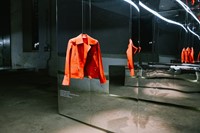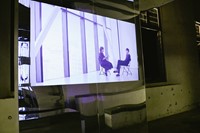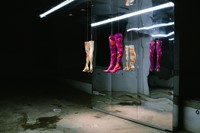In his multi-faceted presentation at Pitti, the designer made a thoughtful case for slowing the pace
To be named as the special Women’s guest at the biannual Pitti festivities in Florence is an invitation for retrospection, and a chance for a designer to elaborate on their creations in a decadent new environment. Away from the rules and regulations of the fashion system, past guests have opted for diverse presentations with rich layers of local and historical subtext – from multi-format art installs to runway shows, and even a live doll-making session (Undercover’s Jun Takahashi, no less). But if ever there was a designer ready to stop and reflect on the industry status quo to deliver a quiet, pensive statement on the pitfalls of process, then Canadian-born Londoner Thomas Tait is your man.
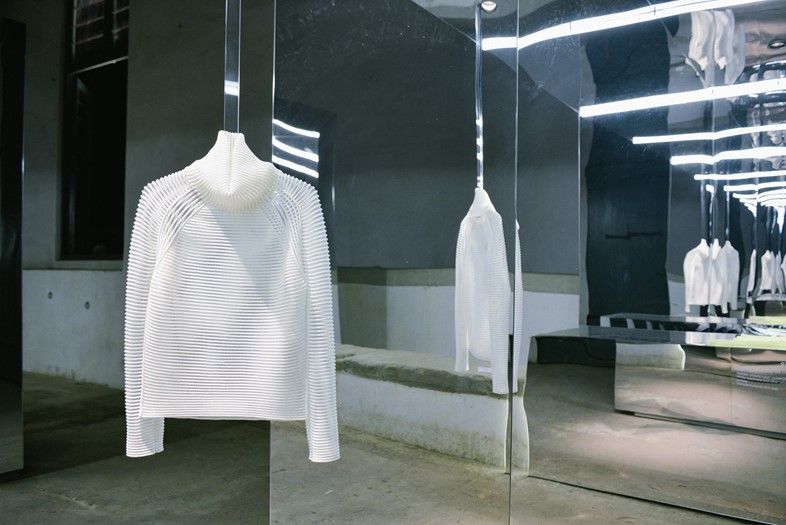
His exhibition on Wednesday evening was not a fashion spectacle, but a conversation and a proposition – designed to be interpreted and digested by the viewer on their own level, and at their own pace. Housed within the stucco Limonaia (or conservatory) of the Boboli gardens, replete with its 17th century arched windows and verdant citrus gardens, Tait’s show was a meeting of minds – bringing together a succinct retrospective of his own product design with a scenography by British designer Mehrnoosh Khadivi of Craftwork Studio, and a series of conversations between Tait and three women whose vision has helped shape his own: Khadivi herself, Tait’s long-time collaborator the stylist Beth Fenton, and revered American fashion critic Cathy Horyn.
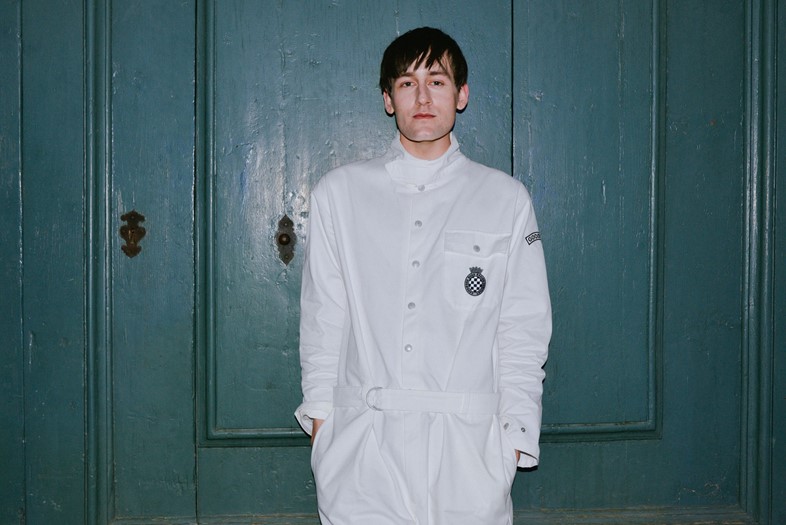
Tait’s concept for the evening was arrestingly simple and effective – the idea being to revisit a series of 7 products from his past collections and respond to each with a new, luxuriously-updated version crafted especially for the event. Given Tait’s LVMH prize win in 2014, this exercise felt particularly poignant – a validation and appreciation of the superior craftspeople made available to him by the powers that be, and an acknowledgment of his own, honest struggle for improvement. From the quirky statement of purple suede cuissards patched with orange patent spots to the subtlety of a white knit in ribbed cashmere and celluloid, his offering was diverse, each bouncing infinitely off the mirrored tunnels that acted as both a stylistic frame and pragmatic display unit for his wares.
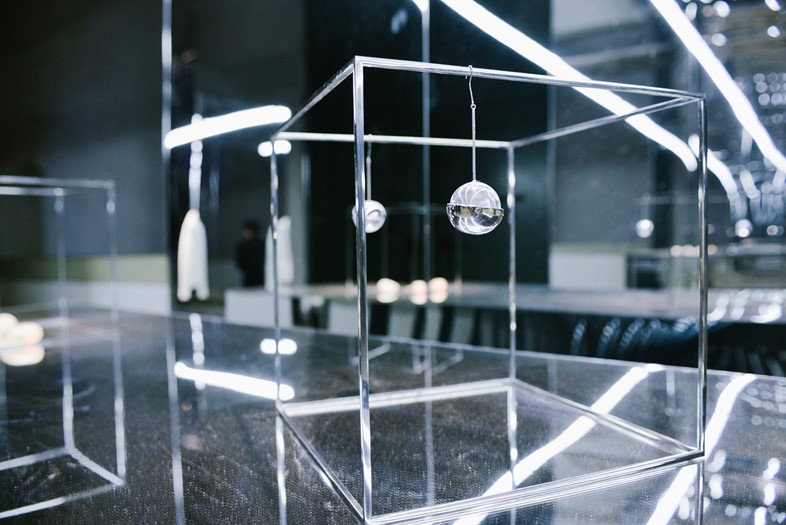
“The idea was how we communicate reflection, time, and visuals, creating infinite spaces with a very serious use of mirror”, explained Tait, in conversation with Khadavi for their Pitti installation – their second collaboration after she designed his A/W15 show space. “This paradox that I am fascinated with in working with Mehrnoosh is how she, functioning as an architect, is in juxtaposition with the fashion industry that is accelerating faster now than it ever has before,” he continued, never afraid to voice his clear objection to the breakneck speed of the current fashion calendar.
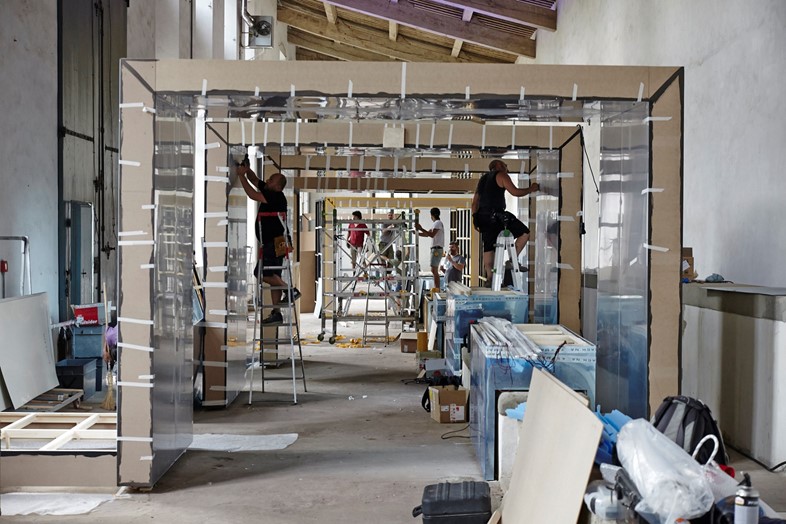
“To be pushed for faster results can unexpectedly bring great things, and unexpected results!” said Khadavi, who too was quick to divulge the difficulties of putting together their ambitious installation with local suppliers and limited time. “I love the idea that there is this narrative, and that we created these spaces where you have to stop, you have to look, it is playful but at the same time it is making a strong clear point. You have products in all the portals, and the fact that an existing ‘something’ is now re-imagined and that you see both together inside that space – that’s a challenge for people.”
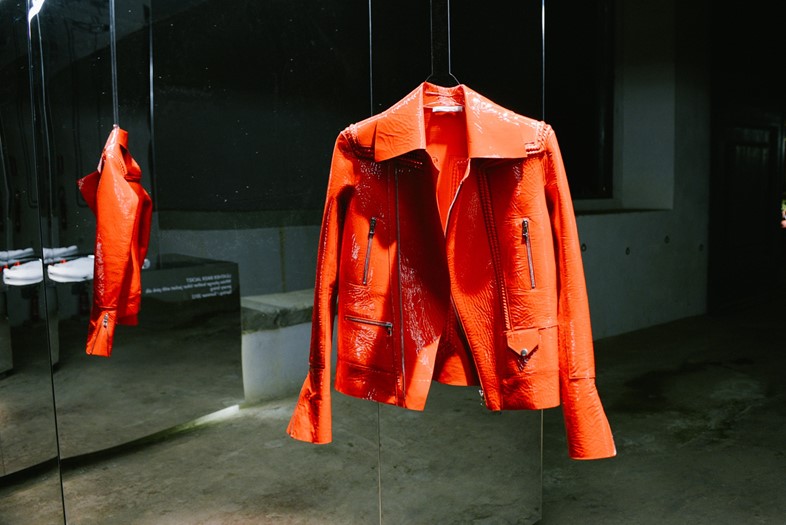
“It is always fantastic to create something new, but that something new doesn’t live in a vacuum”, said Khadavi, pondering on her brief to build within the sumptuous Italian surrounds of the historical Medici building. “You have to have a sympathy for what is around it, and an understanding that things work across scale.” That said, it seems Khadavi shares Tait’s penchant for distorting such impressions of scale – their mirrored rooms, strangely scented by Perfumer H’s ‘Dandelion’ fragrance, were as captivating and guileless as his clothes can be.

